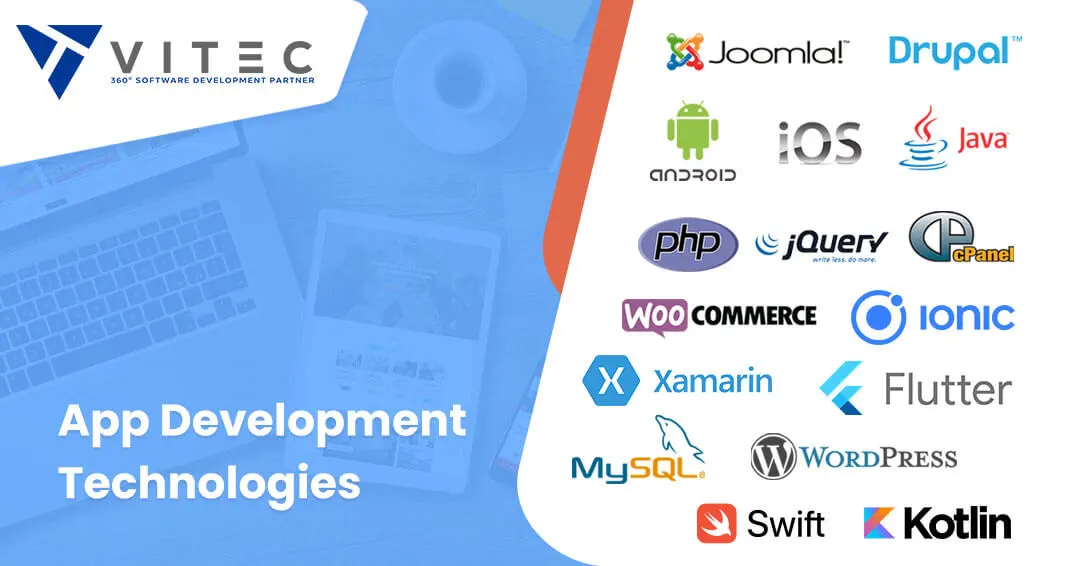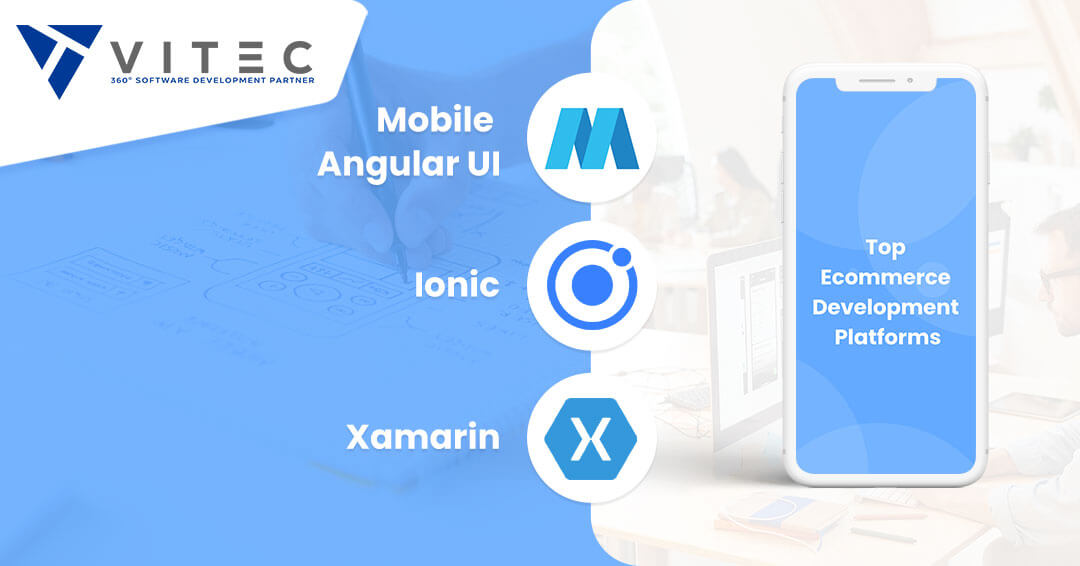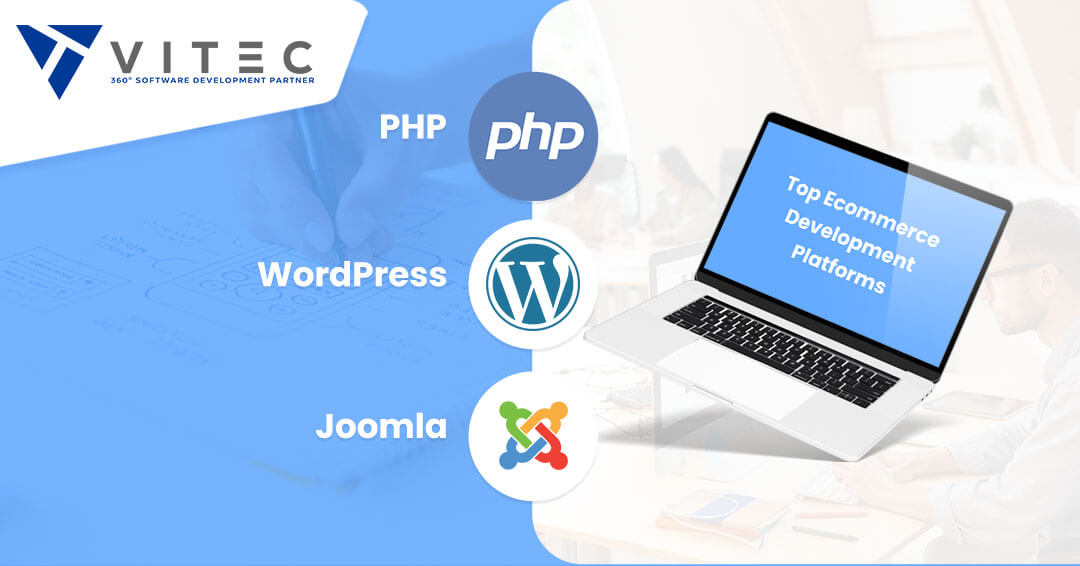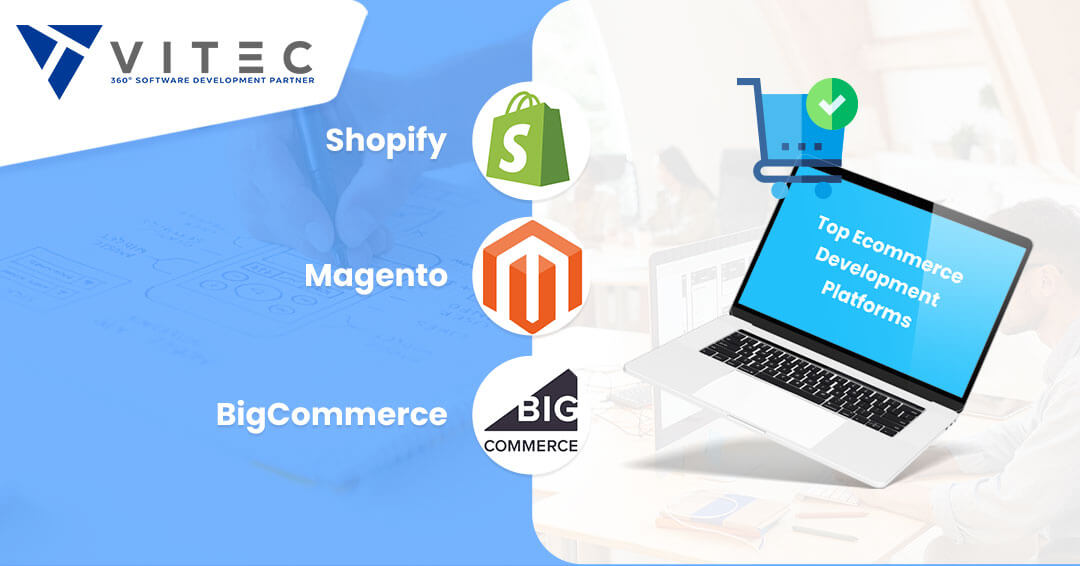9 Best Web & App Development Technologies For Building An App

The number of internet users worldwide stands at a staggering 4.13 billion! That’s 4.13 billion consumers doing everything from reading to researching, socializing, transacting, and more, on the internet. Do you have the tools to reach them and convert them into customers?

The number of internet users worldwide stands at a staggering 4.13 billion! That’s 4.13 billion consumers doing everything from reading to researching, socializing, transacting, and more, on the internet. Do you have the tools to reach them and convert them into customers?
As internet penetration continues to grow, it keeps bringing more and more consumers into the reach of businesses who have an online presence – be it physical businesses or online shops. However, businesses can captivate the attention of internet users, excite them about their offerings, and convert them into paying customers only when they have the right tools to do it.And, here are the two most important tools businesses need to win over their potential customers:
a) A Lightning-Fast, Mobile-friendly, and Stunning Website or Web App
b) A Lightweight, User-friendly, and ImmersiveMobile App
Armed with these two tools, businesses can reach potential audiences halfway across the world, impress them, and turn them into loyal customers.
But you already know that!
What you want to know is: what is the best way to develop a web app or a mobile app that delivers maximum ROI for you?
Modern web and app developers use software development frameworks to make their app development process faster, convenient, and efficient.
Web and Mobile App Development Frameworks are essentially object-oriented software library. They are made of multiple components like programming languages, code libraries, and APIs. The frameworks offer everything a developer needs to design a fully functioning app. Thanks to frameworks, the developer does not have to code the entire website, web app, or mobile app from the ground up. The frameworks offer reusable code, among other things, that makes it fast and efficient to create the apps.
Here are the top 9 web and app development frameworks in the market today.

Top Mobile Development Frameworks
Smartphones are the new home of consumers, and apps are where they spend most of their time. According to a recent report, smartphone users spend 90% of their mobile internet time in apps. The younger generation, in particular, spends an inordinate amount of time interacting with their mobile apps. The average smartphone owner uses only 10 apps per day, although they may use up to 30 apps per month.
So, what happens to the other apps? They lie in dormancy – ignored and unused. Over time, the users uninstall them.
This brings us to the question – how do you create a mobile app that is engaging, immersive, and irresistible to the users?
Your choice of mobile development framework plays a crucial role in helping you create fast, smooth, and feature-rich apps that users love. It also determines the budget of the app development project. Typically, it boils down to the simple choice between native vs cross-platform app development. Native development typically produces lightning fast, deeply immersive, and satisfying apps, while cross-platform apps produce budget-friendly apps with acceptable app performance.
And, here are our top picks of mobile development frameworks:
Mobile Angular UI
Mobile Angular UI is a free, open-source UI framework that combines HTML5, Angular JS, and Twitter Bootstrap to simplify the development of feature-rich and intuitive mobile apps. It features several UI components like scrollable areas, navbars, overlays, switches, and more.
Pros
-TypeScript compatibility ensures cleaner code
-Faster development leads to high scalability
-Outstanding performance due to hierarchical dependency injection and universal support
-Cross-platform technology. Can be used to develop web apps too
-Enjoys good community support and strong backing from Google
-Uses rich libraries that enable developers to create exceptional apps
Cons
-It comes with a steep learning curve
-Document is patchy at best
-Debugging can be quite complicated, even for seasoned app developers.
Ionic
Ionic is one of the most popular frameworks used for building cross-platform mobile apps. It combines Angular and Apache Cordova, making it possible for developers to create apps for Android, iOS, and Windows. Ionic allows developers to utilize a wide variety of hardware functionalities like Bluetooth, fingerprint authentication, health kit, and more to provide users with cutting-edge features and seamless user experiences.
Pros
-Ionic apps produce excellent display performance
-It’s remarkably easy to use
The framework creates progressive web apps that are lightning-fast and beautiful
-Allows creation of high-quality apps for multiple platforms
-Fast development time
-Developers can build high-fidelity apps in record times
-The framework offers exceptional flexibility in terms of customization
Cons
-Too much reliance on plugins for accessing native functionalities
-Absence of hot reloading feature
-Ionic apps tend to have bulkier code
Xamarin
Xamarin is a platform-agnostic mobile app development framework that was created to help developers build cross-platform apps with ease. Apps built using Xamarin can be published with little modifications on Android, iOS, Windows, macOS, Tizen, and other platforms. This saves app development costs and time for the businesses.
The framework, and its namesake creators, were acquired by Microsoft in 2016. Thanks to the backing of this software giant, Xamarin enjoys a massive community of developers that’s 1.4 million strong.
Pros
-Universally compatible – supports all platforms
-Xamarin apps can use native APIs and functionalities like Bluetooth.
-Xamarin’s code sharing capabilities allow quick testing of apps on 2000+ devices quickly
-Apps deliver near-native performance and UX, which is persistently being improved
-It’s open-source and enjoys outstanding community support
-Microsoft has combined disparate development tools into an integrated development kit
Cons
-Xamarin is free for SMBs and individuals, but large enterprises must pay a license fee
-Apps built using Xamarin tend to be heavy in size
-Not suitable for graphics-heavy apps. Each mobile platform has its own design philosophy, but Xamarin’s apps offer the same UX on all platforms

Top Web Development Technologies
Web development technologies have come a long way over the past decade. The emergence of new languages, frameworks, and tools have made web development a complex and rapidly evolving landscape. Somehow in all that complexity, businesses must choose the right technologies that will help them build a website for success.
Today, we’ve shortlisted the top 3 web development technologies for businesses who are foraging into the online world:
PHP
PHP is one of the oldest and most popular programming languages for website and web app development. PHP, short for Hypertext Pre-processor, is a server-side scripting language, which means that it does not run on the web browser but instead on web servers. The most amazing aspect of PHP is its versatility. It can be used for server-side scripting, for building desktop applications, and even for command-line scripting.
For these reasons and many more, PHP continues to be the workhorse of the internet. It even powers several other app frameworks like Laravel, CakePHP, Symfony, and so on.
pros
-Massive developer fanbase. Developers are easily available
-Extensive documentation with excellent community support
-PHP websites load fast
-Low development costs and hosting costs
-Supports connectivity to several databases
-Extensive range of add-ons supported
-Cloud support
-Easy integration with other programming languages, especially HTML
Cons
-As an older language, PHP is on the decline
-Lacks proper debugging tools that make debugging inefficient
WordPress
WordPress is neither a programming language, nor a web development framework. It’s a feature-rich content management system (CMS), which means that it allows you to build, deploy, and use a website without any coding knowledge. So, it hardly comes as a surprise that 38% of the websites on the internet are built on the WordPress platform.
WordPress makes it relatively easy for you to launch a new website. And, it offers almost complete flexibility in terms of looks, appeal, and function. And, the thriving community of WordPress developers, theme developers, and website owners help you through any issue you encounter with your WordPress website.
Pros
-It’s so easy to create that almost anyone can do it
-You can add, edit, and remove content on your site effortlessly
-Millions of plugins allow you to add new features and functionalities to your website
-Enormous selection of free and premium WordPress themes offers you unmatched customizability
-Updating your website to the latest technology is just a matter of a few clicks
-WordPress is optimized for SEO and features several SEO-friendly plugins
-WordPress websites are responsive, clean, and look modern
Cons
-For updates, you’llbe relying on theme owners and plugin owners. They may not always be prompt
-WordPress websites aren’t always the fastest due to the bulky coding of some themes
-WordPress websites are prone to hacking due to their open-source nature and widespread use
-WordPress websites are usually created with templates and are not unique. There could be thousands of other companies with the same website design. For this reason, companies that value branding avoid such pre-made designs
Joomla
Joomla is another content management system (CMS) like WordPress. It has been in the market since 2005 and is an open-source, community-driven CMS. In contrast to WordPress, Joomla offers a greater degree of flexibility in customizations and more options for managing the website. As a result, Joomla can be more difficult than WordPress to use for a new website creator.
Joomla enjoys a vast userbase, including some of the world’s largest businesses, such as Holiday Inn Express, IKEA, and even Linux. Joomla supports robust features that make it ideal for large websites.
Pros
-Extensive range of features and options
-Extreme customizability
-Support to build web apps, and command-line apps.
-Activity community of developers
-Plenty of themes available
-Intuitive content management interface
Cons
-It’s more difficult to use than WordPress
-The availability of plugins and modules is quite limited
-Joomla websites are usually created with templates and are not unique. There could be thousands of other companies with the same website design. For this reason, companies that value branding avoid such pre-made designs

Top Ecommerce Development Platforms
Creating a full-fledged eCommerce platform is an extremely challenging but potentially highly profitable task. Modern consumers are shopping online for almost everything – food, fashion, appliances, electronics, and more. Driven by this growing trend, more and more businesses are going online. However, not all businesses can create an eCommerce website from scratch. That’s why eCommerce platforms remove the complexity from the eCommerce website building and make it easy for businesses to launch their online business.
To build an eCommerce website, you need the following essentials:
-Website builder and designer
-Shopping card
-Order management tool
-Inventory management tool
-Marketing tools – including SEO tools
-Hosting
-Customer support (You will need it!)
With this knowledge in mind, let’s take a look at the top eCommerce platforms out there:
Shopify
Shopify is easily the most popular eCommerce platform in the industry. Launched in 2004, Shopify currently serves 1 million+ customers and offers affordable plans to suit every business’s needs. It’s effortless to create a Shopify store and even easier to manage one. The best thing about Shopify is its vast number of integrations. Whether you want a custom theme, an inventory management tool, an SEO tool, an analytics tool, or something else, Shopify’s vibrant ecosystem offers the app integrations with features you need.
Pros
-Easy to create and deploy
-Shopify sites look clean and user-friendly
-The store loads quickly on the device, even on a wireless data connection
-Unmatched customer support
-Upload and sell unlimited products
Cons
-Slightly expensive
-Barebones Shopify has limited features. You’ll need lots of premium add-ons
Magento
If Shopify lies on one end of the user-friendliness spectrum, Magento lies on the other. But, Magento is designed with a different purpose for a different audience. It packs the most extensive features, options, and functionalities, which make it suitable for enterprises. The open-source eCommerce platform offers several advanced features like a business intelligence dashboard, customer loyalty tools, page builder, cutting-edge marketing tools, and so on.
Pros
-Advanced built-in features like shipping options
-Extreme customizability
-Multiple payment methods supported out of the box
-Excellent ecosystem of plugins
-It’s an AWS-hosted SaaS eCommerce platform, but can be migrated to in-house or private cloud
-Outstanding security features
Cons
-Requires programming-level knowledge and understanding
-Too expensive for SMEs
BigCommerce
BigCommerce is usually the go-to platform for multi-channel online retail businesses. It allows businesses to create beautiful, feature-rich, and user-friendly eCommerce websites, which they can use to sell on third-party marketplaces like Facebook. They allow businesses to use the payment processor of their choice without any additional fee, unlike Shopify, making them a more popular option. In addition to the many advanced features that the BigCommerce platform offers out of the box, there are plenty of integrations available too.
Pros
-Powerful SEO and analytics features baked into the platform
-Advanced reporting and analytics available with lower plans top
-Easy to set up and use
-Customizable with plenty of premium themes
-High backend customizability
-Multi-channel retail support for selling on Amazon, Facebook, Instagram, Pinterest, and so on
-Excellent customer support
Cons
-Pricing can be touch for new businesses
-Few third-party plugins available
-Difficult to migrate
Conclusion
To explore the best development technologies for your business’s unique needs and identify the technologies that will deliver maximum ROI for your business, get in touch with Vitec GmbH today.
Our extensive experience across a broad range of frameworks, programming languages, and development tools has given us a unique insight into them. We will understand your business, your industry, and your customers’ needs to recommend the right combination of technologies for developing your web or mobile app that your customers will love.



Aleksandar
Aleksandar is a passionate digital marketeer with 6+ years experience in various industries. He finds the data & numbers are the way to market things, but also that words are the bridge between just a numbers and brand value, purpose and strategy brought to a user. Using the 5 'W' methodology in creating the content, he is adding 'a plus to a minus', creating simple, but informative blogs & case studies about latest trends in tech & digital indsutry.